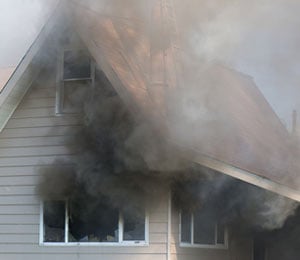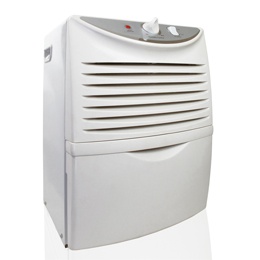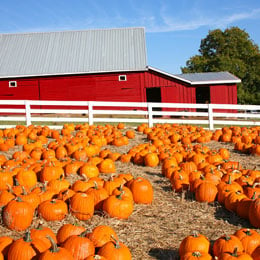Because the days are getting shorter, we start doing a lot more things in the dark. Walking the dog, running or biking, last-minute yard work, and driving are just a few.
 Nationwide, almost half of all driving deaths happen at night, which is three times greater than during the day.
Nationwide, almost half of all driving deaths happen at night, which is three times greater than during the day.
My parents have disliked driving at night for many years. As I raised my own family, I never understood what the big deal was because I was used to driving my kids around day or night. You jump in the car, put on your seatbelt, turn on your headlights, and if I was lucky, I could listen to the music I like.
I recently turned 45 and has my eyesight changed. I went from perfect vision to keeping a pair of cheaters in my car and nightstand, as well as a pair of transitional glasses at work. Several pairs of glasses aren’t the best birthday presents.
Today I understand why my parents dislike night driving. Unfortunately, as we age, our eyesight changes. Peripheral vision, depth perception, and the ability to see color all get worse in low-light conditions.
As we approach the darker months of the year, here are some tips that may help your night driving:
1. Visit your eye doctor. For years, I put off my doctor’s visit. I just kept holding things out at arm’s length to read. Finally, I got tired of this, and as I already mentioned, I have glasses everywhere.
Our ability to see at night changes as we age. At 45, I need four times more light to drive at night than when I was 19. At age 55, it takes eight times as long to recover from glare than at age 16. Start adding cataracts and degenerative eyes diseases to the mix, and night driving becomes very difficult.
In the next few months, I’ll probably order a pair of glasses just for driving at night. My doctor told me my ability to see at a distance isn’t as good as I think it is. Adding an anti-reflective coating to the lens, which helps reduce glare, can sharpen my vision.
2. Dim your dashboard. I recently drove a company vehicle to a conference. Because of an early-morning start, I traveled the night before. The dashboard was so bright, it made it difficult to see, so I had to use the dimmer switch. Up until this point, I never used a dimmer switch before. After doing some research, I learned that a bright dashboard could hinder your forward vision. Try adjusting the dashboard lights the next time you’re driving at night.
3. Avoid looking at oncoming headlights. As oncoming traffic approaches, it can be very difficult to see. Instead of looking at the headlights to see if the bright beams are on, look off to your right side. While this can be a bit tricky, it can reduce the time your eyes need to recover from the glare. If you can’t safely look away, don’t.
4. Reduce your speed. At night it’s important to reduce your speed. Over driving your headlights can make it even more difficult to see what’s ahead of you. In addition, as deer become more active this time of year, a reduced speed could help you spot them and avoid a collision.
5. Make sure your headlights are adjusted. If you feel your headlights don’t do a good job of lighting up the road, visit your local mechanic. It’s possible they may need adjustment. I had my daughter’s car headlights adjusted and she told me it made a big difference.
6. Rain, rain, go away. I think driving at night in the rain is awful. I find it very difficult to see road markings, whether on a lighted highway or a dark country road. Make sure your wiper blades are in good working order and your windshield is clean. To help with this, I recently bought some Rain-X. It helps repel water on the windshield.
7. Clean the inside of your windshield. One of my pet peeves is the haze that builds up on the inside of my windshield. I usually don’t notice it until I’m driving at night. Regularly cleaning the inside of your windshield can help reduce nighttime glare.
For more information, visit the links below.
Physcial changes in older drivers that may effect driving skills
Ten driving tips to help you enjoy your Thanksgiving holiday
No more mistakes when replacing windshield wipers
6 tips for driving this winter season
Sources
https://wisconsindot.gov/Pages/safety/education/older-drv/physical.aspx
https://www.nsc.org/learn/safety-knowledge/Pages/news-and-resources-driving-at-night.aspx
https://www.forbes.com/2009/01/21/car-accident-times-forbeslife-cx_he_0121driving.html
SOURCE: West Bend, Scott Stueber on Nov 1, 2016 1:15:51 PM
 When the kids go back to school and the leaves start changing colors, we start seeing news reports about fire safety. We see firefighters visiting homes and replacing batteries in smoke detectors or installing new ones. We hear radio commercials about getting your furnace inspected. Yes, the change in season brings about all kinds of things that we must consider to make our homes safe for the arrival of winter.
When the kids go back to school and the leaves start changing colors, we start seeing news reports about fire safety. We see firefighters visiting homes and replacing batteries in smoke detectors or installing new ones. We hear radio commercials about getting your furnace inspected. Yes, the change in season brings about all kinds of things that we must consider to make our homes safe for the arrival of winter.
 When I was growing up, one of our family traditions was a trip to our local pumpkin patch. I always loved trying to find the best pumpkin, or at least one better than my brother’s. It was even more exciting when I found a pumpkin attached to a vine. This meant I could take my jackknife out of its holster and use it to cut the vine.
When I was growing up, one of our family traditions was a trip to our local pumpkin patch. I always loved trying to find the best pumpkin, or at least one better than my brother’s. It was even more exciting when I found a pumpkin attached to a vine. This meant I could take my jackknife out of its holster and use it to cut the vine. It’s very important to update your insurance agent each year on the changing status of your children: Are they back to college? Do they have a vehicle? Will the vehicle be garaged? Are they eligible for good student discounts?
It’s very important to update your insurance agent each year on the changing status of your children: Are they back to college? Do they have a vehicle? Will the vehicle be garaged? Are they eligible for good student discounts?